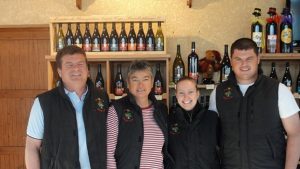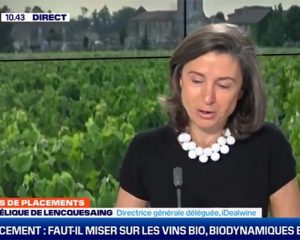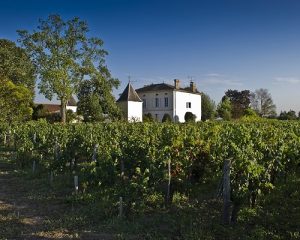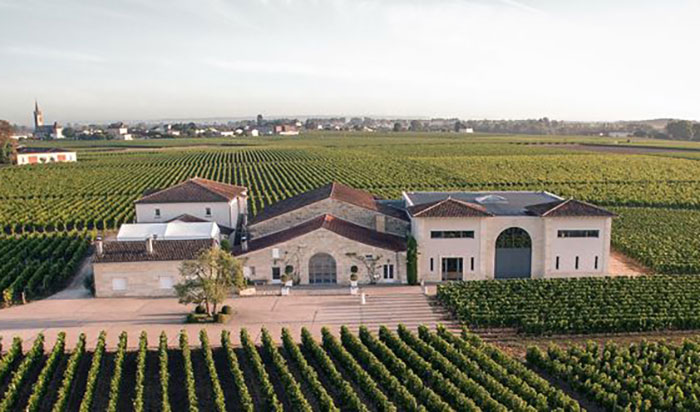
Embark on a journey to discover the rich history and artisanal secrets behind this Pomerol estate steeped in family tradition preserved by generations for over 150 years. What is more, you can revisit our virtual tasting with the estate and indulge in their wines.
La Conseillante, a century and a half of excellence
While Bordeaux is home to many historical estates, very few can trace their history back to the early 17th century and have been owned by the same family for more than 150 years, since 1871 to be specific.
La Conseillante dates back to the 17th century, with the estate known as Domaine de Mautreta belonging to the Pipaud family. In those days, there was only a single parcel of vines on the estate, and it was the next owner, Catherine Conseillan, who further developed viticulture at mid-century (planting a total of 12 hectares). Catherine also gave her name to the estate. Several owners followed in her footsteps.
The Féret guide published in 1868 ranked La Conseillante 7th in Pomerol for the quality of its wines.
The property subsequently passed into the hands of the Nicolas family, whose descendants still own it today. Nicolas and Louis-Simon Nicolas, the sons of Jean Nicolas – a veterinarian at a Libourne stud farm – originally established a ‘cloths and novelties’ trading business in Libourne, later branching out into the wine trade. The Nicolas Frère business even acquired several wine estates on the Right Bank: Clos l’Eglise and Château Plince in Pomerol, Château Bel-Air in Lalande-de-Pomerol and lastly La Conseillante in 1871. In 1873, after the death of his brother, Louis-Simon, also now a Libourne town councillor, managed the estate alone until he passed away in 1880. His children, Pierre Louis Félix Nicolas and Emile Nicolas, then took over. Louis Nicolas, a Doctor of Law, ran the estate with brio, not least through the phylloxera crisis that hit the estate in 1876. He was instrumental in establishing the worldwide reputation of the estate’s wines, travelling all over the world. He also co-founded the Pomerol Wine Syndicate in 1900 and later became its president. The estate has been run by several generations of the Nicolas family right up to the present day, with the fifth generation, Bertrand and Jean-Valmy Nicolas, at the helm since 2003.
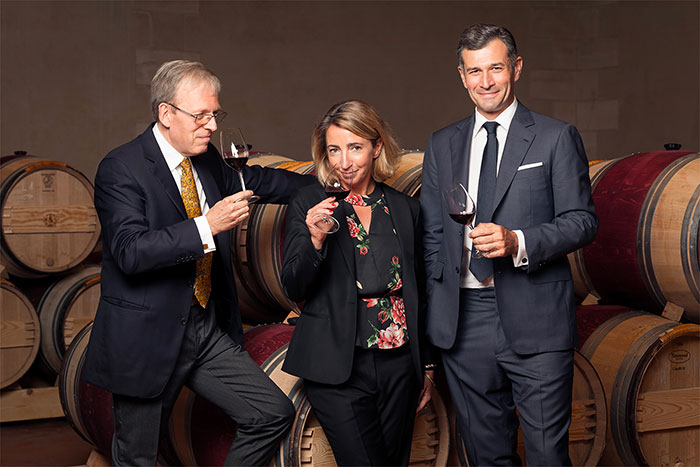
Michel Rolland has also been advising the estate since 2013. And Marielle Cazaux has been the estate’s Managing Director and oenologist since 2014. Both Jean-Valmy and Bertrand are deeply involved in all decisions, including technical ones, and proudly serve as the custodians of the property’s distinctive style. Their presence and their commitment contribute to the warm family atmosphere and spirit that reigns at the estate. Eight people now work at the estate.
Twelve hectares of divided excellence in Pomerol
Nestling at the gateway to the Pomerol appellation, the smallest of Bordeaux’s AOCs (800 hectares), La Conseillante is a sizeable property for the appellation – where the average is closer to five hectares – yet a relatively small property by Bordeaux standards.
The appellation is unique in that it lies on clay soils, allowing for good water retention, and subsoils rich in iron oxide. La Conseillante stretches across different types of terroir, with clay to the north-east and gravel to the south-west. The vineyard has been divided into 16 distinct plots with the oldest vines dating back to 1958.
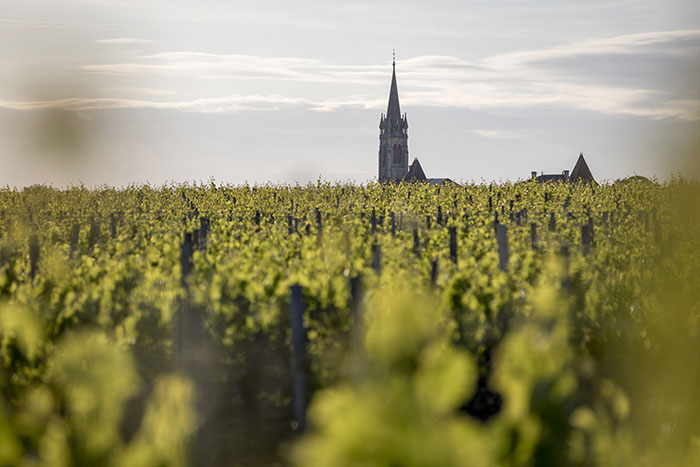
The estate’s vineyard is surrounded by illustrious neighbours such as Petrus and Cheval Blanc, to name but two! While not certified organic, the estate is committed through its ISO 14001 and HVE 3 certifications, and although these are not very restrictive, they reflect its determination to reduce its environmental impact. The teams are especially committed to promoting biodiversity on the estate, even more so since the change in management. To this end, they have planted a variety of plant species (clover, oats, fodder radish, etc.). They use organic products and also apply biodynamic and phytotherapy practices.
The grape varieties planted on the estate consist of around 80% Merlot and 20% Cabernet Franc. Cabernet Sauvignon will probably be reintroduced on certain well-suited soils, accounting for around 5%. This will be a way to rediscover the estate’s historical grape varieties and help it to adapt to climate change.
Simple yet precise plot-based vinification
The estate upgraded its vat room in 2012, allowing it to vinify grapes on a plot-by-plot basis. With 22 concrete vats of varying sizes, the estate can vinify small amounts from a single plot and harvest the grapes in several batches to ensure optimum ripeness at all times. These are “haute-couture” vinifications, as Marielle Cazaux likes to say. The larger vats are exclusively used for blending.
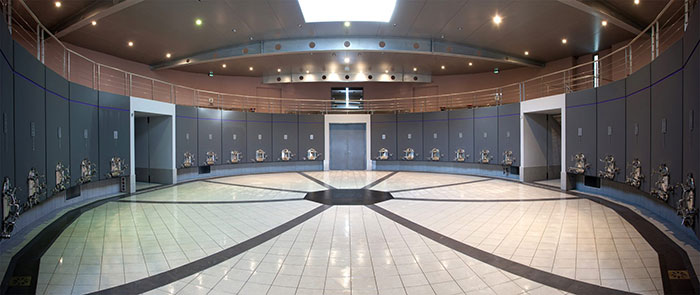
The winemaking process is on the whole very straightforward. Once the grapes have been destemmed and sorted by hand, everything is rather traditional and hands-off; there is nothing ‘technological’ about it, and the only work conducted is the racking of the must and occasional pumping over. “A great winegrower is a lazy winemaker,” says Marielle. Malolactic fermentation starts by itself, in vats or sometimes in barrels. A few rackings are undertaken (to separate the wine from the lees during ageing), usually two, with a final one at the bottling stage. Michel Rolland and his team create the blends based on ten or so tastings.
While the team has undergone significant changes, including Marielle Cazeaux’s arrival, the cellar master has worked at the estate since 2001, bringing a level of consistency to the style of the wines.
To improve temperature control, the cask cellar was also renovated in 2015. Air conditioning has been installed to maintain a constant temperature of 12° C all year round and a humidity level of 60%.
The new team, who are naturally intent on preserving the very soul of the estate’s wines, have been particularly attentive to reducing the amount of sulphur used during the winemaking process. They conduct a 4-day cold pre-fermentation (cold maceration for better fermentation regulation and to prevent any deviations, protecting the must by saturating it with CO2). They do not use any sulphur at all during vinification, and only sparingly during the ageing stage. As a result, they have managed to reduce their doses by 30%. Among other benefits, this produces more open wines.
The percentage of new oak has also been slightly reduced, although it is still around 60–70%. A proportion of amphorae is also sometimes included.
Exceptional Pomerols embodying finesse
The signature style of the estate’s wines is primarily characterised by finesse, elegance and silky tannins. Marielle also mentioned the very prominent aromas of violets, the inspiration behind the estate’s visual identity, said to come from the Merlot grapes grown on clay soils. This is a rather fleeting floral aroma, however, and one that is difficult to smell. And finally, the truffle aromas generally develop after 8–12 years of bottle ageing. The estate recommends that classic vintages should be drunk between 6 and 20 years of age, and the most powerful vintages between 12 and 25 years. That said, lovers of older wines have the option of ageing them for much longer.
Lastly, when it comes to food and wine pairings, the estate’s wines naturally complement red meat dishes very well, but they also suit roast chicken and dishes that bring together elements from the sea and the land. When it comes to cheeses, opt for hard cheeses such as tomes and comté, for example.
The estate produces around 40,000 bottles of fine wine annually. In addition to that, the estate produces a second wine, accounting for almost 12% of the harvest.
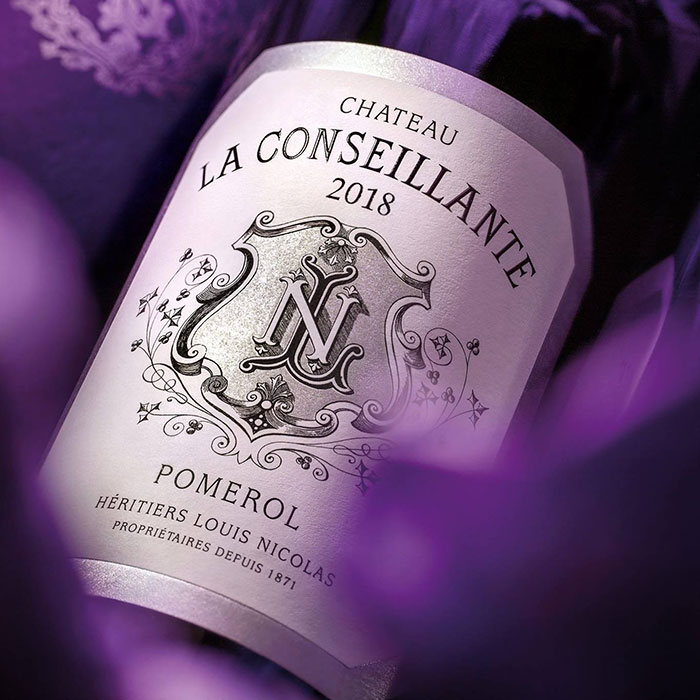
- Pomerol Château La Conseillante
The estate’s great wine, produced from around 80% Merlot and 20% Cabernet Franc, is matured for 18 months in French oak casks with 60–80% new wood. It exudes exceptional finesse and a bewitching silky texture.
Wine Advocate gave the 2020 vintage the highly coveted 100/100 mark.
- Pomerol Duo de La Conseillante
The estate’s second wine, produced from younger vines, is matured with a smaller proportion of new oak. More immediate and flavour forward, it is less powerful than the first wine. We were very fortunate to organise a virtual tasting with the estate and Marielle Cazaux a year ago and you can watch a video of the event here. And if you want to learn more about the estate, we recommend you read their book.

